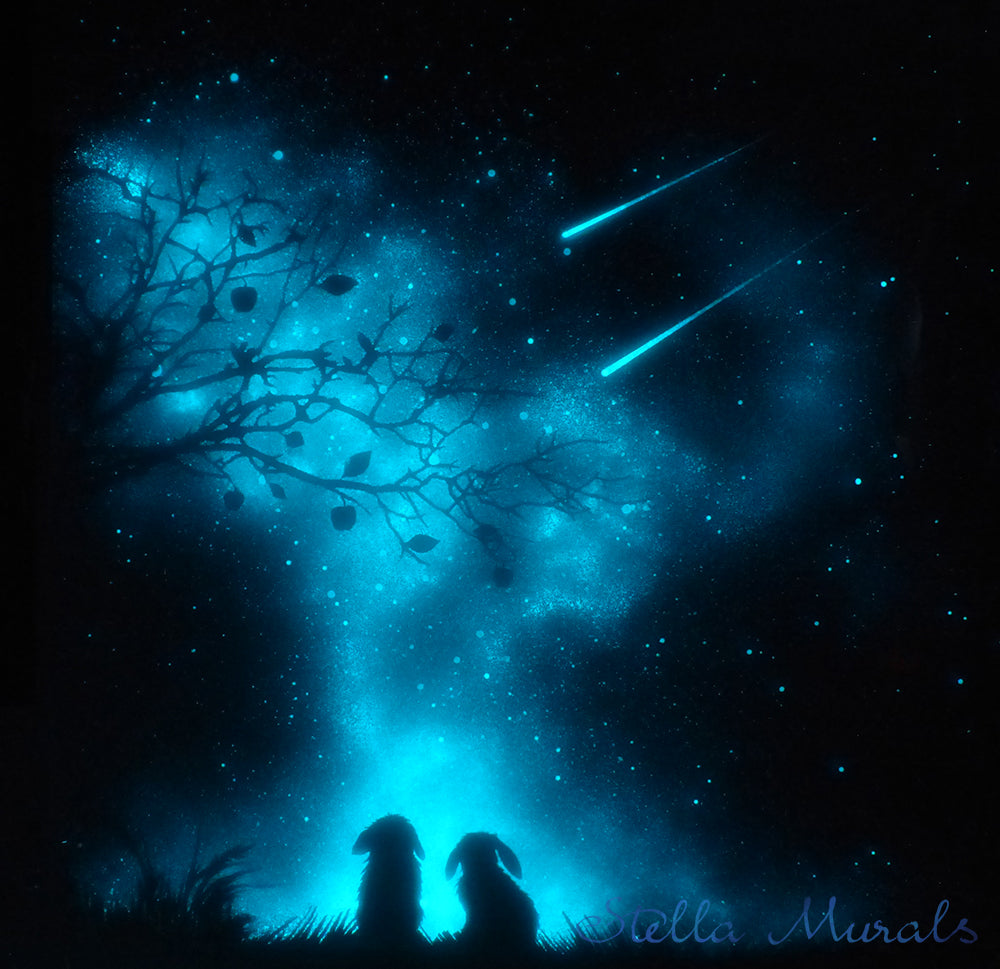
Celestial Fireworks!
Shooting stars are not stars at all; they are meteoroids, tiny particles that enter and burn up in the Earth's atmosphere, creating the luminous trails we observe. They range in size from a grain of sand to a small pebble.
Shooting stars exhibit a stunning array of colours influenced by the composition of the meteoroid and atmospheric conditions. Common colors include white, yellow, and green, with occasional bursts of blue and red. The length of a meteor's streak of light varies, with factors such as size, speed, and entry angle contributing to the duration. Some meteors create short, quick streaks, while others produce long, dazzling trails that persist for several seconds. The nicest one I’ve ever seen had tiny white break away sparkles. It’s a shame they are so fleeting!
A fireball shooting star, is a spectacular and exceptionally bright meteor that streaks across the night sky. Fireballs are characterised by their intense luminosity, often outshining the brightness of Venus and even the Moon. The brilliance of a fireball is attributed to its size and the velocity at which it enters Earth's atmosphere.
Fireballs are typically caused by larger meteoroids, which may be composed of denser materials or have a greater mass than the average meteoroid. As these larger particles hurtle through the Earth's atmosphere, they experience increased friction and compression, leading to more significant heating and a more dazzling display of light. The intense brightness of fireballs makes them easily visible even in areas with some light pollution.
The best Meteor Showers: When and Where:
Perseids (August): The Perseids, associated with the dust of the Swift-Tuttle comet entering the atmosphere, grace the night sky in mid-August. Known for their fast and bright meteors, the Perseids often leave persistent trails that captivate observers. Under a dark sky and in a prime position, you could see around 60-100 shooting stars per hour at its peak.
Geminids (December): Active in December, the Geminids are linked to the asteroid 3200 Phaethon. Renowned for their vibrant colors, including blue, green, and red, Geminid meteors are a stunning display of celestial beauty. This shower can be really active, with up to 120 shooting stars per hour.
Quadrantids (January): Occurring in early January, the Quadrantids have an uncertain origin but are believed to be associated with an asteroid or a disrupted comet. Known for their brief but intense peak, the Quadrantids can produce up to 100 meteors per hour.
Lyrids (April): The Lyrids, associated with Comet C/1861 G1 Thatcher, peak in April. While not as prolific as some other showers, the Lyrids are known for producing bright meteors with the occasional fireball.
Orionids (October): Linked to Halley's Comet, the Orionids are active in October. Although they are not as intense as some other showers, the Orionids are known for their fast-moving meteors, often leaving behind persistent sparkling trails.
The best meteor shower I have seen was in Christchurch, New Zealand early in the morning. It was the Eta Aquariids meteor shower and we sat outside on our deck and watched one or two meteors every minute for an hour.
Meteor Storms:
Meteor storms are intense displays of shooting stars, where a high number of meteors can be observed within a short period. These events are characterised by a significantly increased rate of meteors compared to regular meteor showers. The best time to witness a meteor storm is unknown as they can be unpredictable.
The most famous meteor storm in history occurred during the Leonids in 1833, North America. This event, known as the "Night the Stars Fell," featured thousands of meteors per minute. Shooting stars fell like rain.
The appearance of a meteor storm is very rare.
While meteor storms are unpredictable and don't occur every year, they are highly anticipated by astronomers and stargazers alike.
So, next meteor shower find a cozy spot away from city lights, gaze upward, and let the magic of the night sky unfold, don’t forget to make a wish!
Quick links
About Stella Murals
Stella Murals is an Australian based glow in the dark art studio. Started in New Zealand in 2011, owned and operated exclusively by artist Esther Iranyi.

Leave a comment: